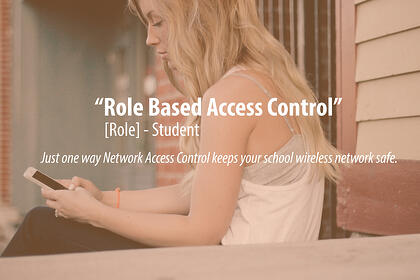
Many teachers worry about the same thing, how do they securely use new mobile technology in the classroom? I come from a long line of teachers. My mother was a teacher, my sister is a teacher, and even both of my sister-in-laws are teachers. As they sit around and gab about how times have changed, a reoccurring theme arises; technology.  “Technology” is the new buzz word in schools. It is seemingly as common of a word as “vanilla lattes” ordered at Starbucks; ever present and ever growing. Whether they fear the rise of technology in the classroom or not, they know it is going to be implemented sooner rather than later. Yet, they all worry about the same things, how will they securely allow students to roam the web in class? How will they and their schools adhere to the CIPA regulations put in place?
“Technology” is the new buzz word in schools. It is seemingly as common of a word as “vanilla lattes” ordered at Starbucks; ever present and ever growing. Whether they fear the rise of technology in the classroom or not, they know it is going to be implemented sooner rather than later. Yet, they all worry about the same things, how will they securely allow students to roam the web in class? How will they and their schools adhere to the CIPA regulations put in place?
Luckily, there is an answer for schools as they want to implement technology in schools. Though the solutions are complex the answer (if working with an experienced wireless solutions provider) is seemingly very simple. Schools must build wired and wireless network systems that integrate with security appliances which provide control and enforcement.
So what type of security appliance is the right one? Many manufacturers out there have products on the market which seemingly provide proper Network Access Control. But many provide features that span in width and lack in depth. We have solely focused on building secure mobility solutions for years and like to consider ourselves vendor agnostic. Whatever the solution best fits for each client is what we like to go with. But when it comes to security appliances, the best fit is always the same one we propose and here are 3 reasons why:
1.) The Network Access Control has the ability to VALIDATE IDENTITIES:
To control devices on your network you need to know what the device is and who the user is on each device. Does that user exist in your directory services? What part of the network do they want to access? What time of day does that user connect? Where are they when they are connecting? How or what device is that user connecting with? The more specific information you have the better you can control where you want them to go on your network, when they are allowed to go there and how they can connect which brings us to the next reason we choose one certain type of NAC solution.
2.) The Network Access Control has the ability to ASSIGN A ROLE:
Once you know who is connecting and what device they are connecting with, you can assign roles that user automatically gets placed in to give certain access (based on the policies you have written for that user.)
For example, if it’s a student you can give them access to the shared drive or learning applications that have been whiltelisted. If it’s a faculty or staff member you can give them access to internal resources but with an exception to any HR servers. If a guest is accessing the network you can give them only access to check email and save on your much wanted bandwidth. All these rules are based on policies you have written that the NAC solution then transmits, which brings us to the final reason we always choose our NAC solution:
3.) The Network Access Control has the ability to Enforce Policies:
You now have full control of the behaviors of your devices connecting to your network and can make sure viruses aren’t being transmitted as users HAVE TO comply with your terms of use including internet content, etc.
We would love to talk further with you about what specific NAC solution has allowed hundreds of schools to safely on-board technology into their classrooms. Please contact us here for further information!






